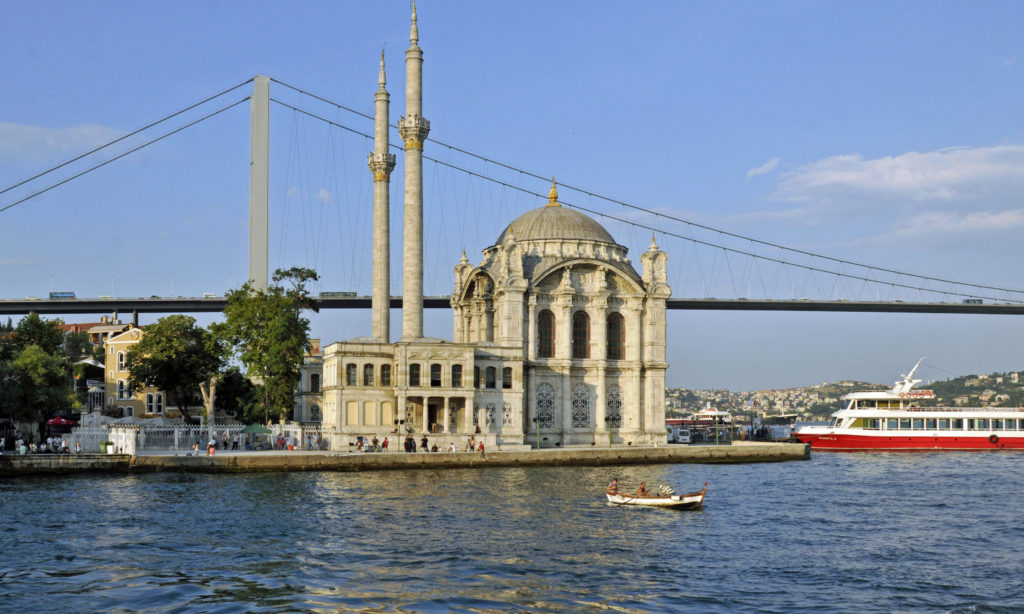
Istanbul, Turkey, is home to more than 3000 mosques, some of which, including the Blue Mosque and Hagia Sophia, are internationally famous. The little known Ortaköy Mosque is among the most photographed.
Istanbul lies on both sides of the Bosporus River that divides Europe from Asia. Ortaköy, now an Istanbul neighborhood, was originally a small village lying along the European bank of the Bosporus. Dating from the Byzantine era, the village was predominately Christian until the sixteenth century, when Ottoman Sultan Suleiman the Magnificent encouraged Muslim Turks to settle there. Ortaköy’s Muslim residents built a small mosque on the riverbank in 1720, only to see it destroyed 11 years later during an insurgency. In 1839, Abdulmejid I became Sultan and ordered construction of a new mosque near the site of the original one. To design the mosque, he hired Armenian architects who had designed many buildings for Ottoman rulers. Construction of the mosque began in 1854 and was completed two years later. The Ortaköy Mosque, officially the Grand Imperial Mosque of Sultan Abdulmejid, reflects the neo-Baroque style and sits on a jetty extending into the river. The small mosque has a single dome, two minarets and bay windows providing natural light to the interior. The mosque, like others from the period, includes both a space for worship and a summer residence for the sultan.
In 1970, Turkey began construction of a suspension bridge across the Bosporus to connect the European and Asian parts of Istanbul. The European side of the bridge, completed in 1973, is anchored in Ortaköy, north of the mosque. Boats taking visitors to Istanbul along the Bosporus cruise close to the Ortaköy Mosque, providing a magnificent view of both the mosque and the bridge. Today, Ortaköy is a fashionable neighborhood, attracting visitors to its shops and restaurants.
Comments are closed.